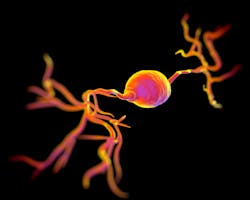Bioimaging research infrastructure forms in Europe
Bioimaging companies Leica Microsystems, Nikon, Zeiss, FEI, Olympus, SVI, and Photometrics have jointly founded an open industry board linked to the upcoming European research infrastructure for imaging. Called Euro-BioImaging, the mission of the Board is to facilitate interaction between the imaging industry and its academic users, enabling timely understanding of the users' needs. This has potential to directly boost innovation in biomedical sciences and strengthen the position of companies that can respond faster to new developments on the market.
As a pan-European research infrastructure, Euro-BioImaging will be composed of imaging facilities, called nodes, distributed throughout Europe. These facilities will open their doors to all life science researchers, granting access to state-of-the-art imaging instruments and hosting training activities.
Christoph Thumser of Leica, the first Chair of the Board, says that “imaging companies are very motivated to establish closer interaction with users and to contribute to training activities, ensuring the best use of instruments,” adding that all other companies from the bioimaging and medical imaging are welcome to join the Board.
Plans for establishment of Euro-BioImaging came from the scientific community in Europe, but are now adapted by governments of 17 European countries and the European Molecular Biology Laboratory (EMBL; Heidelberg, Germany), all of which are interested in its implementation and construction. It is expected that the first generation of Nodes is selected next year by countries, soon opening access to researchers.
Jan Ellenberg of EMBL, the scientific coordinator of Euro-BioImaging’s preparatory phase, emphasised that “it is very important that researchers and imaging facility staff have a clear communication line to a wide range of companies in the field, because their ability to do research depends on the availability of suitable products, be it lenses, lasers, or dyes, or large instruments like the most advanced super-resolution or electron microscopes.”
For more information, please visit www.olympus-europa.com/microscopy.
(Thumbnail image via Shutterstock)
-----
Follow us on Twitter, 'like' us on Facebook, connect with us on Google+, and join our group on LinkedIn
Subscribe now to BioOptics World magazine; it's free!
